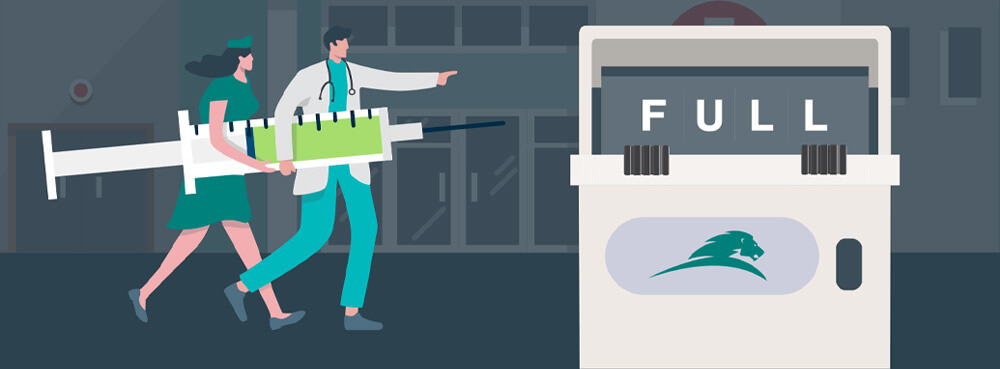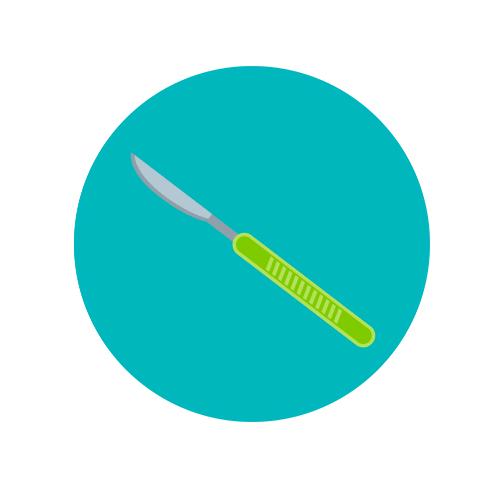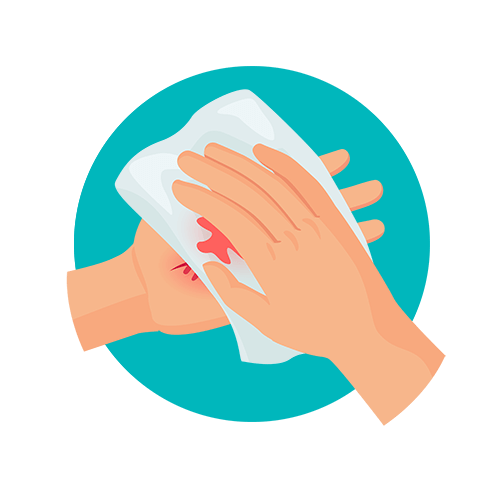Safe Disposal of Sharps in Hospitals and Healthcare Settings

IN THIS BLOG:
4 / Lowering rates of needlestick and sharp-related injuries
5 / Understanding safe sharps disposal protocols
Introduction
Sharps – a shorthand term for any sharp implement in a medical setting – are classified as biohazardous medical waste due to their ability to puncture, cut, or tear the skin and expose the injured party to contaminants. This category of waste is considered potentially injurious to humans and animals that come in contact with it, not only for the risk of injury itself, but also for the potential exposure to dangerous pathogens from blood and other contaminated bodily fluids.
Biohazardous waste must be scrupulously handled and disposed of to ensure the safety of medical personnel and patients. The most at-risk for sharps-related injuries are those who handle the implements directly. However, when sharps bins aren’t used appropriately, incidents and injuries involving tangential personnel (janitorial workers, administrators) and even patients can occur.
But what are considered sharps?
What is sharps waste?
 As previously mentioned, sharps waste is any implement or collection of implements that can pierce the skin. These can include:
As previously mentioned, sharps waste is any implement or collection of implements that can pierce the skin. These can include:
- Syringes
- Hypodermic needles
- Phlebotomy needles
- Blunted needles
- Suture needles
- Scalpels
- IV catheters
- Disposable razor blades
- Microscope slides
- Certain broken hard plastics
Cuts, punctures, tears, and other injuries from exposed sharp implements are a clear hazard to anyone in contact with improperly handled used sharps. The risk of exposure to bloodborne pathogens makes inappropriate sharps disposal exponentially more dangerous.
Bloodborne pathogens and contaminated bodily fluids
The transmission of bloodborne pathogens and contaminated bodily fluids is undoubtedly the most severe consequence of improper disposal of sharps in hospitals and healthcare settings. While it’s possible to transmit a variety of infections via contaminated needlestick or sharps injury, the following bloodborne pathogens are the most serious:
- Hepatitis B (HBV). This is a highly contagious virus that attacks the liver, causing inflammation and leading to cirrhosis or even cancer if left untreated. It is commonly spread through bodily fluids and blood.
- Hepatitis C (HCV). This type of hepatitis is generally transmitted through contact with infected blood. It is more likely to result in chronic infection, though it can clear on its own in roughly 25 percent of people infected. This can lead to fibrosis of the liver if left unaddressed.
- Human Immunodeficiency Virus (HIV). This is a viral infection that progresses into Acquired Immune Deficiency Syndrome, or AIDS. This is highly transmissible through blood, and other bodily fluids.
Lowering rates of needlestick injuries

Although having the appropriate resources for the safe disposal of sharps is critical to reducing the number of injuries in healthcare settings, many sharps injuries take place either while the sharps are in use, directly after use but before disposal, or during the disposal process.
Sharps injuries frequently occur during insertion or withdrawal of the needle or instrument. The instruments that must be manipulated during use have the highest reported rates of injury. The Occupational Safety and Health Administration (OSHA) offers guidelines for adopting the use of medical devices that do not require needles or feature integrated guards and other protections against exposure to contamination.
It’s important for management to understand the practical realities of using sharps – medical personnel who are in daily contact with sharps offer valuable insight and often have ideas for implementing efficient and safe practices. Employers in healthcare settings may periodically interview personnel for guidance and input on safer workplace practices.
Understanding safe sharps disposal protocols
The correct usage of sharps disposal containers is only one of the many guardrails against sharps-related injuries. The treatment of the sharps themselves is crucial to reducing the potential for injury. One-handed handling and/or mechanical assistance must be the default techniques for preparing sharps for disposal. Broken hard plastics or glass must also be gathered with the aid of the appropriate tools, such as forceps, tongs, or a simple broom and dustpan.
Sharps disposal containers must be easily and immediately accessible, highly durable, leakproof, clearly labeled, and in a secure location so that they are not tampered with or accidentally accessed by patients or non-authorized personnel. Containers must never be filled beyond the appropriate capacity.
All employees, whether patient care personnel or supplementary workers, should receive training in the safe disposal of sharps. For expert consultation on sharps disposal or to find the best sharps disposal containers for your practice’s needs, please visit our information page.
Daniels Health is dedicated to making healthcare safer. Our medical waste management solutions reduce needlestick injuries while keeping your facility in compliance at every step with our cradle-to-grave approach. For additional information on resources, education, and products that improve and enhance safety in the workplace, contact Daniels Health today.
Let's Talk!
Your time is valuable, and we don’t want to play hard to get. You can either phone us directly on the details listed on our contact page, or feel free to fill out this short form and one of our team members will get back to you as quickly as possible.
